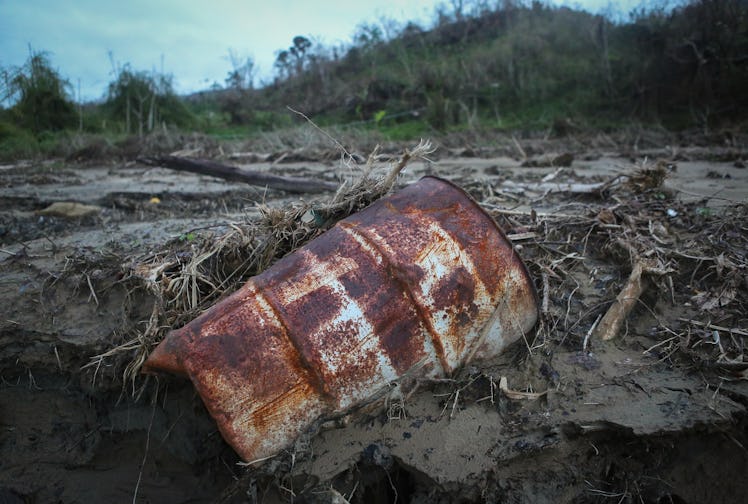
Terrible Mudslides Have Buried A California Town, Here’s What You Need To Know
California really hasn't had the best of luck when it comes to natural disasters. After suffering some of the worst wildfires experienced in the state's history, Southern California now has to deal more turbulent and fatal weather. On Jan. 9, mudslides ripped into Santa Barbara County, triggered by the heavy rainfall that hit the greater Los Angeles area. And the damage is already more devastating and fatal than anyone could have ever expected.
According to the Associated Press, 13 people have been killed and 20 others hospitalized due to the devastating mudslides, and it's quite possible that the number of fatalities will rise as rescue efforts in the affected areas continue. About 50 people were pulled from the rooftops of their homes by helicopters, and there's no telling how many more victims could be buried underneath the destruction. An unknown number of people are reportedly still unaccounted for.
According to the Los Angeles Times, counties below Santa Barbara were ordered to evacuate by noon on Monday, Jan. 8, and other neighborhoods and areas in the region were put under voluntary evacuation. But the Montecito area was one of those areas not mandated to evacuate, and unfortunately suffered some of the most devastating damage. According to a spokesperson for the Santa Barbara County Fire Department, the damage in Montecito is so severe that first responders have yet to reach other areas that may be affected by the damage, because of the significant road blockage that mudslides have caused.
Meteorologists were aware of the impending massive rainfall (the first major system of the year) and knew to alert areas that are at risk of flash floods and mudslides to take proper precaution. The timing of these rainfalls was imperative in the decision to issue mandatory evacuations, as most of the Southern California region that was attacked by devastating wildfires in Dec. 2017 has yet to recover from the damage.
Many parts of Southern California were threatened by the mudslides because of "burn-scar areas," meaning areas that have lost their natural vegetation due to those wildfires — leaving the dirt and soil less able to absorb water and more vulnerable to the risk of mudslides. The region was destabilized as a result of the damage, and had the fires never happened, the land likely would have naturally prevented flooding and mudslides from happening.
On Dec. 4, a fire most commonly referred to as the Thomas Fire broke out in Ventura, California, and stretched to 65,000 acres of Los Angeles County by Dec. 6. Since the outbreak of the fires, more than 280,000 acres have burned, making it the largest California wildfire in modern history, according to CAL Fire, a fire protection agency. Back on Sept. 4, Los Angeles suffered a 7,000-acre fire known as the La Tuna fire, that also saw the destruction of homes and forests in the area.
The night before the storm, The National Weather Service (NWS) warned of heavy rain, and NBC Los Angeles reported that regions of Southern California could wind up with up to six inches of total rainfall by the time the storms passed.
Unfortunately, the damage from the fires that totaled the Los Angeles area have continued despite the fact that the flames were combatted weeks ago. California has really suffered through a lot over when it comes to natural disasters the past year, and it's tragic that the damage has to trickle into the new year.
We can only hope that the first responders are doing their best to help as many people as they can, and that the death toll doesn't increase as more information on this situation comes to light.
Editor’s Note: A previous version of this article contained outdated information about the scope of the Thomas Fire. It has since been updated with the correct data.